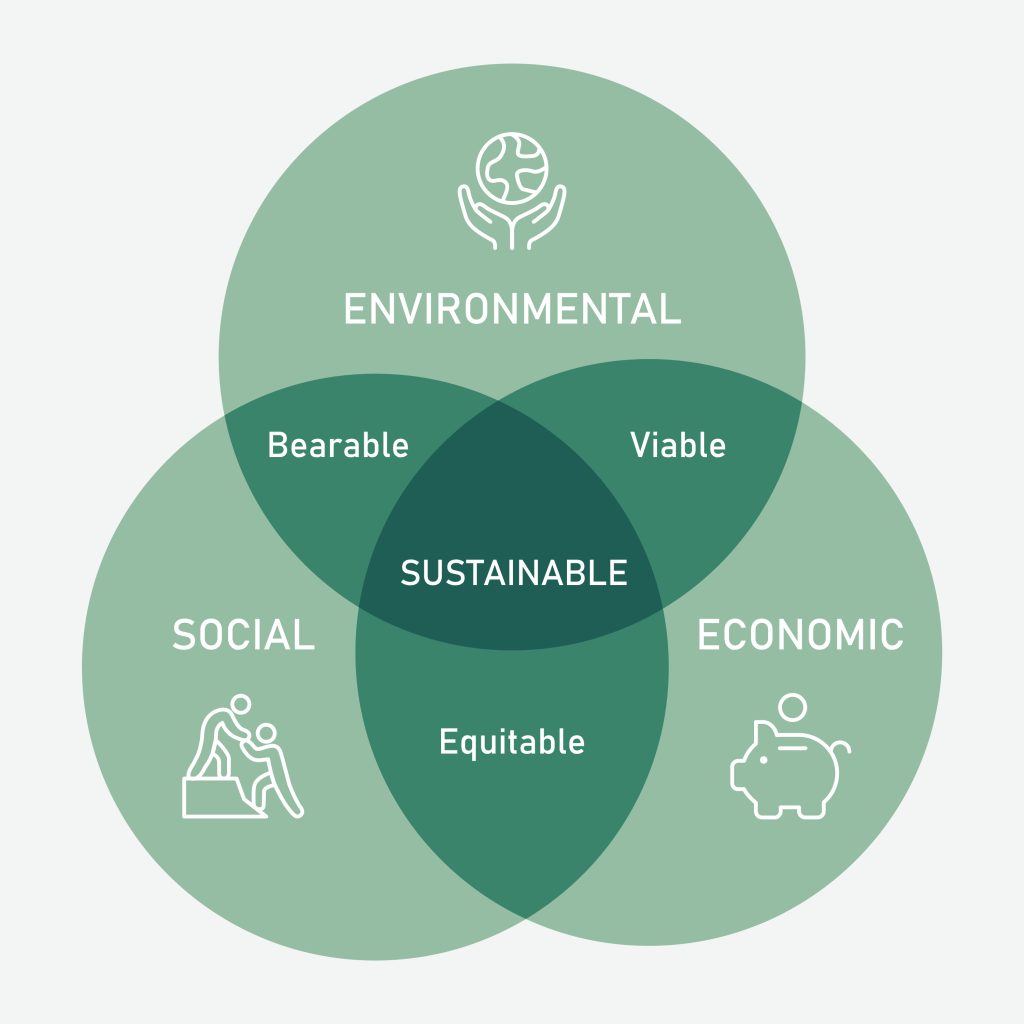The Three Pillars of Sustainable Business refer to the balanced approach to balancing economic success with environmental and social responsibility.
It encompasses environmental sustainability, social sustainability, and economic sustainability, which are equally important and interrelated.
Companies must strive to balance these three pillars to achieve true sustainability and ensure long-term viability while making a positive impact on the environment and society.
Table of Contents
Introduction
In today’s rapidly changing business landscape, companies are under increasing pressure to balance economic success with environmental and social responsibility.
This has led to the concept of “sustainable business,” which refers to companies that are committed to meeting the needs of the present without compromising the ability of future generations to meet their own needs.
At the core of the sustainable business is the “triple bottom line” – the three pillars of environmental, social, and economic sustainability.

Each of these pillars is equally important and must be considered in order to achieve true sustainability.
Three Pillars of Sustainable Business
1. Environmental Sustainability

Environmental sustainability refers to the practices and initiatives that a business implements to reduce its impact on the environment and promote environmental conservation.
It encompasses a wide range of activities aimed at reducing waste, conserving resources, and implementing environmentally-friendly production processes.
One of the key goals of environmental sustainability is to reduce waste and conserve resources. This can be achieved through a variety of means, such as reducing energy consumption through the use of energy-efficient technologies, implementing recycling programs, and reducing water usage.
Companies can also promote the use of environmentally-friendly materials in their products and packaging and work with suppliers to ensure that their production processes are environmentally friendly.
Examples of environmental sustainability practices include:
Environmental sustainability is important because it helps to protect the planet and its resources, reduce the impact of climate change, and ensure a sustainable future for future generations. By implementing environmentally-sustainable practices, businesses can also improve their reputation, increase efficiency, and reduce costs.
2. Social Sustainability

Refers to the social responsibility of a business, including how it treats its employees, interacts with the community, and ensures human rights are respected throughout its supply chain.
It is an important aspect of sustainable business and involves creating a positive impact on society while also ensuring that the needs of all stakeholders, including employees, customers, and the wider community, are met.
Here are some of the key components of social sustainability:
Social sustainability is an important aspect of sustainable business and involves creating a positive impact on society while also ensuring that the needs of all stakeholders are met.
Companies must take a proactive approach to social sustainability, including treating employees fairly, engaging with the community, respecting human rights throughout the supply chain, and being socially responsible.
3. Economic Sustainability

Refers to a business’s ability to operate in a financially viable manner over the long term while taking into account the environmental and social impact of its operations.
It involves balancing the financial goals of the business with its environmental and social responsibilities, ensuring that the business can operate sustainably and remain financially viable while also making a positive impact on the environment and society.
Here are some of the key components of economic sustainability:
In conclusion, economic sustainability is an important aspect of sustainable business and involves balancing the business’ with its environmental and social responsibilities.
Companies must take a long-term approach to economic sustainability, implementing sustainable practices, reducing costs, and tapping into the growing market demand for environmentally and socially responsible products and services.
Conclusion
The Three Pillars of Sustainable Business – environmental sustainability, social sustainability, and economic sustainability – provide a comprehensive framework for companies to balance their economic, environmental, and social responsibilities.
By taking a holistic approach to sustainability, businesses can ensure their long-term viability, protect the planet and its inhabitants, and contribute to a more sustainable future for all.
Environmental sustainability involves reducing the impact of business operations on the environment and promoting environmental conservation through practices such as reducing waste, conserving resources, and reducing carbon emissions.
Social sustainability involves creating a positive impact on society while also ensuring that the needs of all stakeholders, including employees, customers, and the wider community, are met through practices such as treating employees fairly, engaging with the community, and respecting human rights throughout the supply chain.
Economic sustainability involves balancing the financial goals of the business with its environmental and social responsibilities, ensuring that the business can operate sustainably and remain financially viable through practices such as reducing costs, tapping into the growing market demand for sustainable products and services, and making investments in sustainable practices.
Sustainable business is not just about compliance with environmental and social regulations but about creating a positive impact on the world.
Companies that embrace sustainable business practices will not only benefit from a positive reputation and increased efficiency but will also be contributing to a more sustainable future for all.
By balancing and integrating the Three Pillars of Sustainable Business, companies can ensure that they are operating in a responsible and sustainable manner and that they are contributing to a better world for future generations.
References:
- Porter, M. E., & Kramer, M. R. (2011). Creating shared value. Harvard Business Review, 89(1-2), 62-77.
- BSR (Business for Social Responsibility): https://www.bsr.org/
- Elkington, J. (1997). Cannibals with forks: The triple bottom line of 21st century business. Capstone, Oxford.
- The Sustainability Consortium: https://www.sustainabilityconsortium.org/
- World Business Council for Sustainable Development (WBCSD): https://www.wbcsd.org

